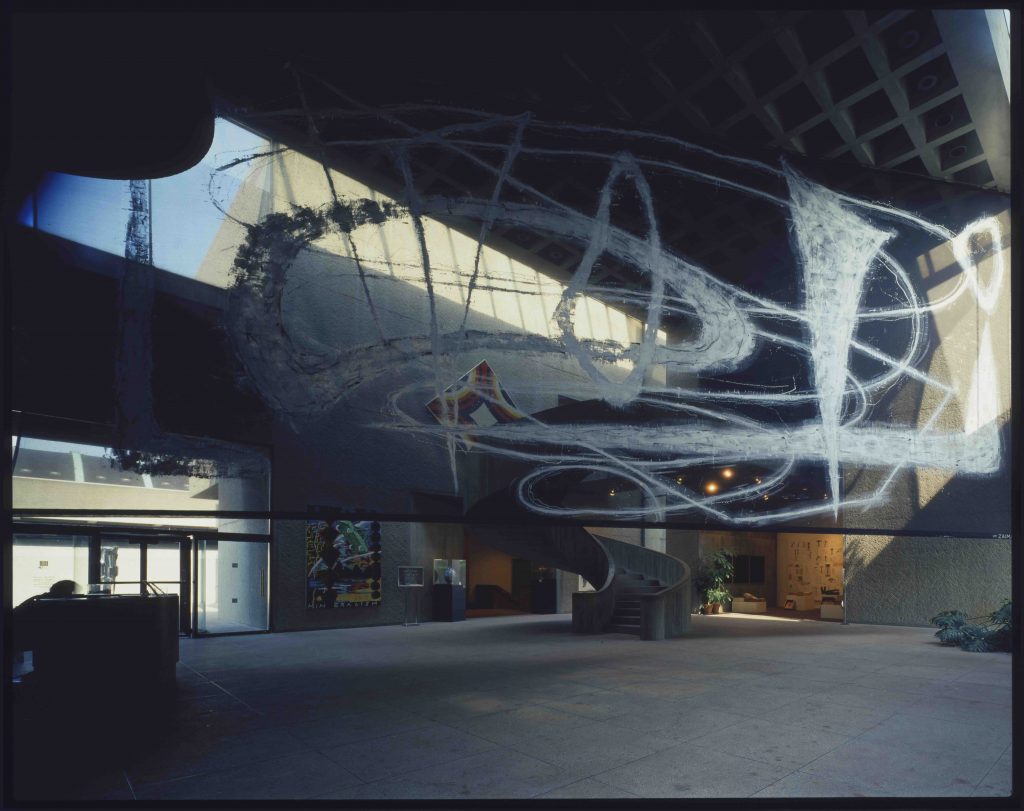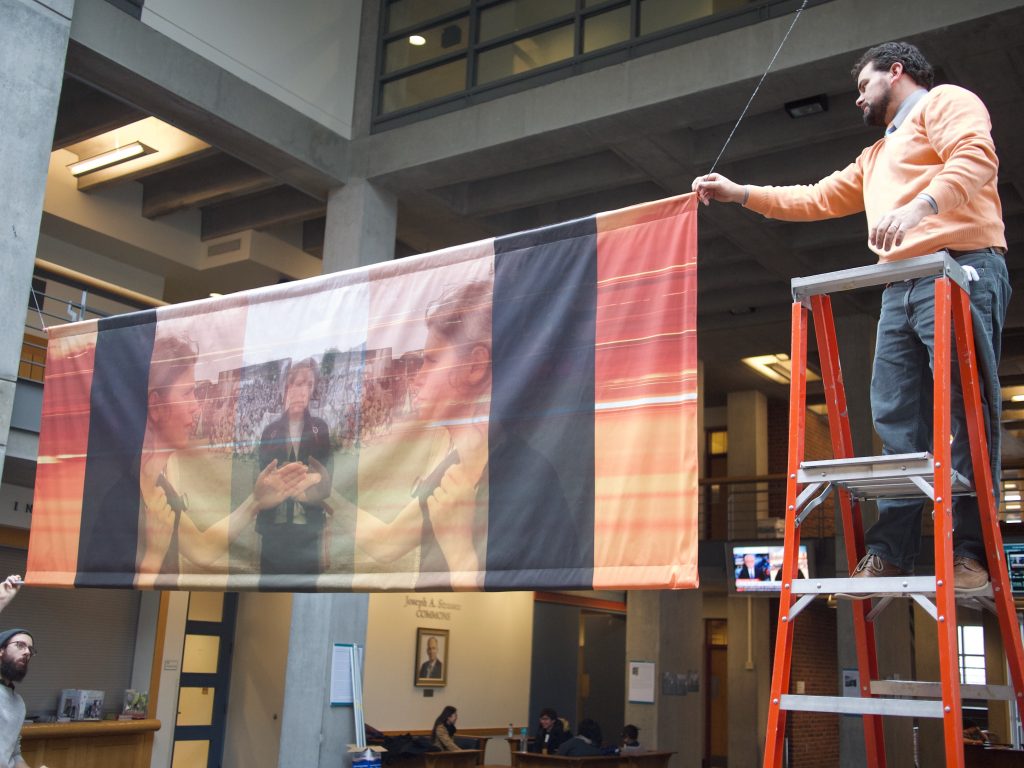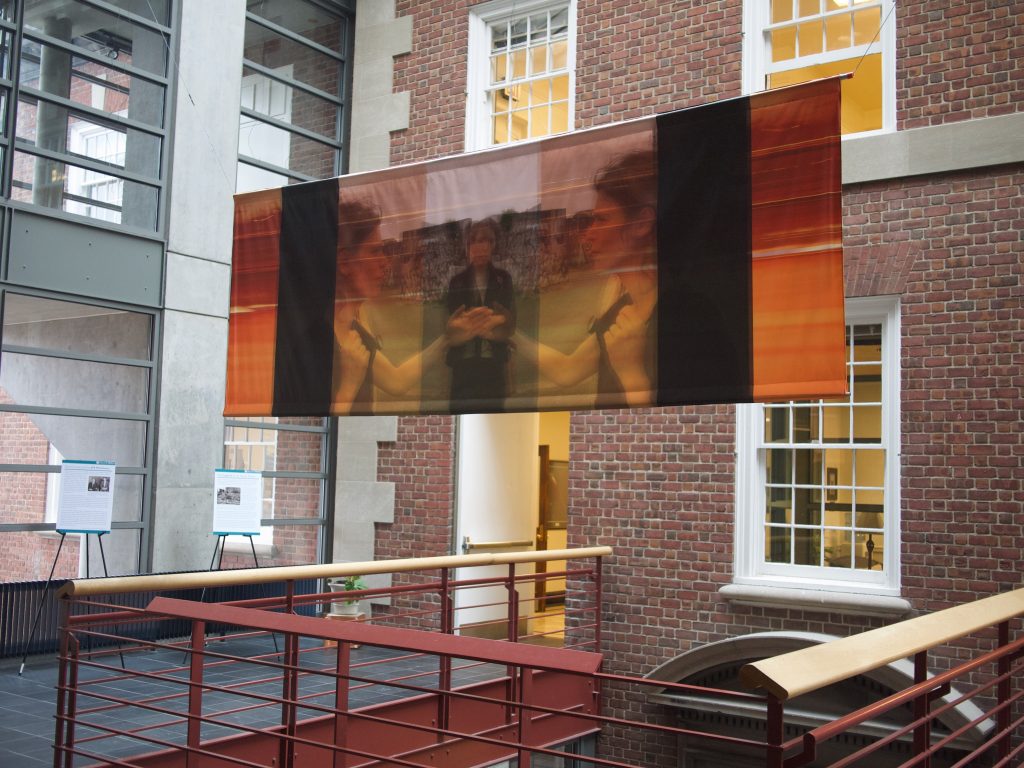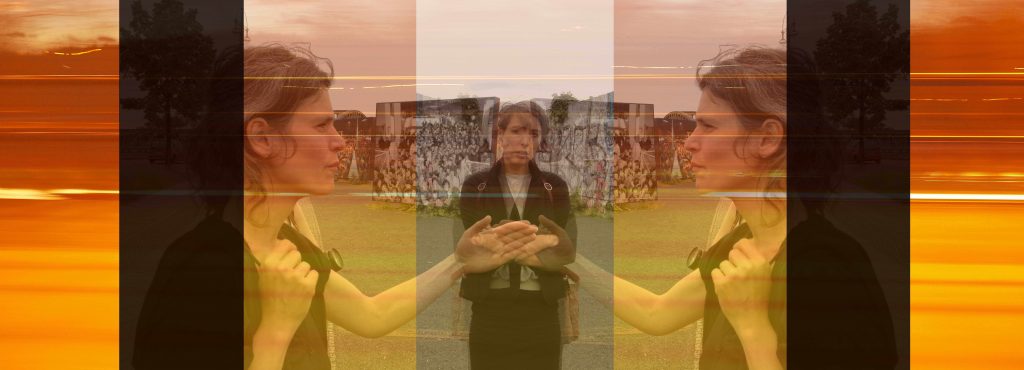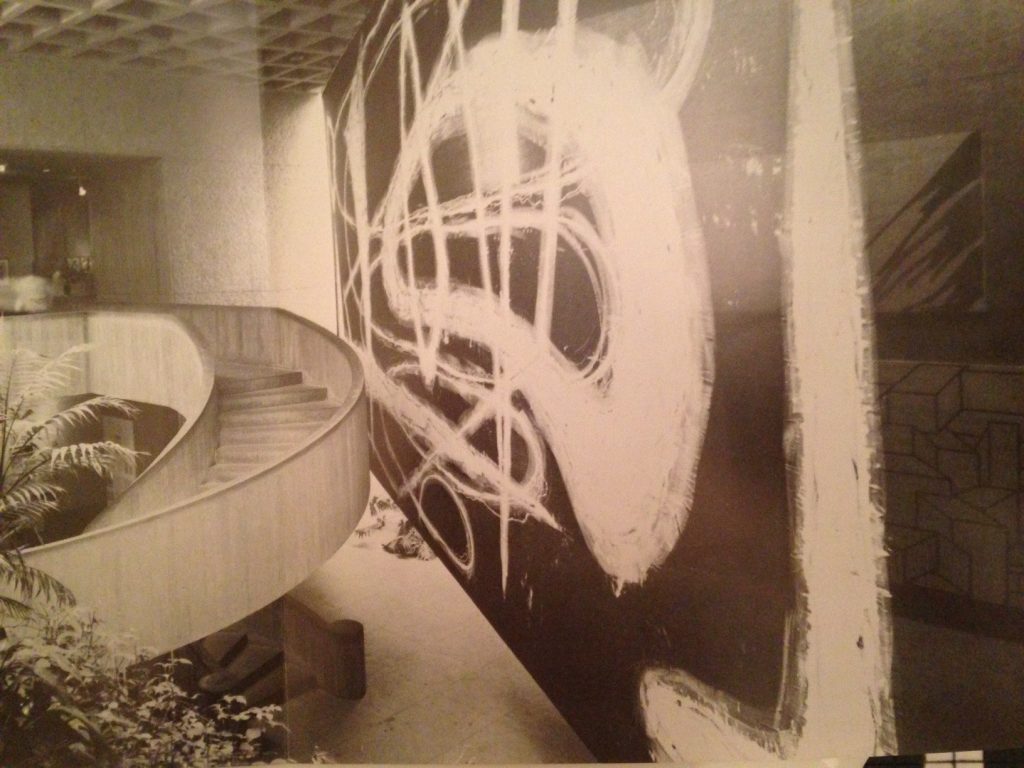
Everson Museum installation 1985 Rholplex on scrim 25′ x 60′
Stephen Zaima’s Everson Museum installation took me completely by surprise. Hearing about it before I saw it, I could only imahine something oppressively ponderous. In fact, despite its tremendous size, the painted scrim he produced was an almost elusive presence whose aspects shifted dramatically according to one’s vantage point. On the scrim, Zaima translated to architectural scale the kinds of shapes and gestures that recur in his studio work. The translation was so successful that the energy of the painted shapes seemed to levitate the surface that bore them. Far from consuming the available space, the installation piece seemed to throw it open to one’s senses and imagination for the first time. Kenneth Baker
.
25th Anniversary of the Fall Of The Berlin Wall installation at Syracuse University home, Florence, and Strasbourg campuses. 2014 photo composite on translucent fabric 48″ x 144″
Stephen Zaima, the wall, 2014 The image is the specular duplication of a photograph shot nearby the Berlin Wall, in the year of the 25th anniversary of its fall. Two women, one in profile, foreground, with an outstretched hand, and the other in a frontal pose, with folded arms and some commemorative photo-murals on the background, create a perfectly symmetrical composition where figures and settings double, clash and overlap into an extremely controlled duality. This opposition, suggestive of the division of the two Germanys, is emphasized by the vertical stripes marking the composition, yet mitigated in the central space, where the two hands and the two figures of the woman symbolically coincide and unite. The overlapping of the two photographs, identical and specular, seems then to symbolize not the unification of two different and contrasting parts, but the suturing of the same lacerated identity: that of a city “divided within itself,” as the artist says, “connected as well as divided by hopes, fears, and tunnels.” Anna Ricciardi
Stephen Zaima, il muro, 2014 L’immagine è data dalla duplicazione speculare di una fotografia scattata nei pressi del muro di Berlino, nell’anno del venticinquesimo anniversario della caduta. Due donne, una di profilo in primo piano, con la mano protesa, l’altra in posa frontale, con le braccia conserte e delle gigantografie commemorative in secondo piano, creano una composizione perfettamente simmetrica in cui figure e sfondo si duplicano, contrappongono e sovrappongono in un dualismo estremamente controllato. Questa contrapposizione, allusiva della separazione delle due Germanie, è accentuata dalle fasce verticali che scandiscono la composizione, ma poi attenuata nella sezione centrale, dove le mani e le figure della donna simbolicamente si sovrappongono e uniscono. La sovrapposizione delle fotografie, identiche e speculari, sembra così simboleggiare non tanto l’unificazione di due parti distinte e contrastanti, quanto la sutura di un’unica identità lacerata, quella di una città “separata in se stessa”, come l’artista afferma, che appare “connessa e al tempo stesso divisa da speranze, paure e tunnel.”


